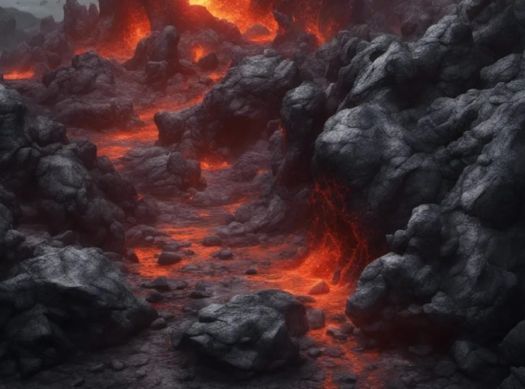Difference between revisions of "Aa"
Tao alexis (talk | contribs) |
Tao alexis (talk | contribs) |
||
| Line 4: | Line 4: | ||
Aa also forms when a lava flow comes in contact with ground water, which is quickly turned to steam and erupts violently, breaking up the lava crust. | Aa also forms when a lava flow comes in contact with ground water, which is quickly turned to steam and erupts violently, breaking up the lava crust. | ||
| − | The incredibly spiny surface of solidified aa makes walking very difficult and slow, disallowing any [[Movement (stride)|stride]] greater than stride-1 for [[Humanoid|humanoids]] and most creatures. Creatures like [[Puddings, Oozes & Jellies|jellies]] are unaffected. | + | The incredibly spiny surface of solidified aa makes walking very difficult and slow, disallowing any [[Movement (stride)|stride]] greater than stride-1 for [[Humanoid|humanoids]] and most creatures. Creatures like [[Puddings, Oozes & Jellies|jellies and oozes]] are unaffected. |
Revision as of 04:07, 14 August 2023
Aa (pronounced "ah-ah") describes a volcanic terrain with a particularly rough and jagged surface, resulting from a lava that cools and solidifies while still in motion. As the forward edge of the flow cools, the interior is yet viscous — this unsolidified lava breaks the surface crust, so the front of the flow becomes a mass of broken and jagged lumps. Pieces of lava crust then roll down slope, adding to the rough and jumbled character.
Aa also forms when a lava flow comes in contact with ground water, which is quickly turned to steam and erupts violently, breaking up the lava crust.
The incredibly spiny surface of solidified aa makes walking very difficult and slow, disallowing any stride greater than stride-1 for humanoids and most creatures. Creatures like jellies and oozes are unaffected.
See also,
Coral Reef (range)
Geology (sage study)
Jungle (range)
Pacific Islands
